Kenya is undoubtedly one of the best places to observe wildlife – as many trip reports on mammalwatching.com proof. The biodiversity is simply overwhelming. Anyone who visits the country learns that Kenia needs visitors in order to be able to preserve this diversity. For some it is not enough to „just“ travel the country and look for animals, they want to become active in nature conservation themselves. Biosphere Expeditions offers this opportunity. From February 25th to March 10th, 2023, I had the chance to accompany participants during such an expedition as a free-lance journalist and wildlife photographer.
Expedition leader Johnny instructs us at the first camp meeting to only leave the house very cautiously at night: “First illuminate the area with a flashlight, before you step out the door!” Later, at the first opportunity, the beam of my flashlight hits a Bush Duiker, one of the species that is harder to find and observe. And as it shows: I won’t see it again during the next two weeks. What a great start!
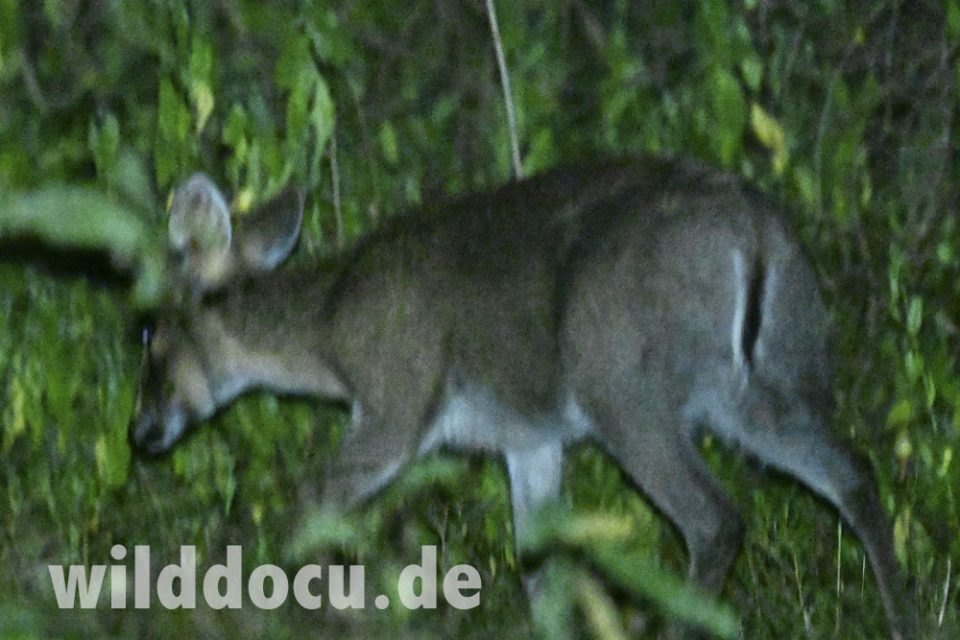
The temptation is great to take a detour on the way back from the toilet and to illuminate every corner of the garden with my light. But for security reasons you really shouldn’t go to far. But it’s 2 am, and in four hours the breakfast cereal will be on the table. But there is nothing – absolutely nothing – urging me to get back under my mosquito net. Hippos are grunting. And the giggles? Could that be a Spotted Hyena?
In the morning we get an introduction to the area and the work we want to accomplish. An important part is loading and understanding the app we need for the animal counts. At 2 pm the driver training begins.
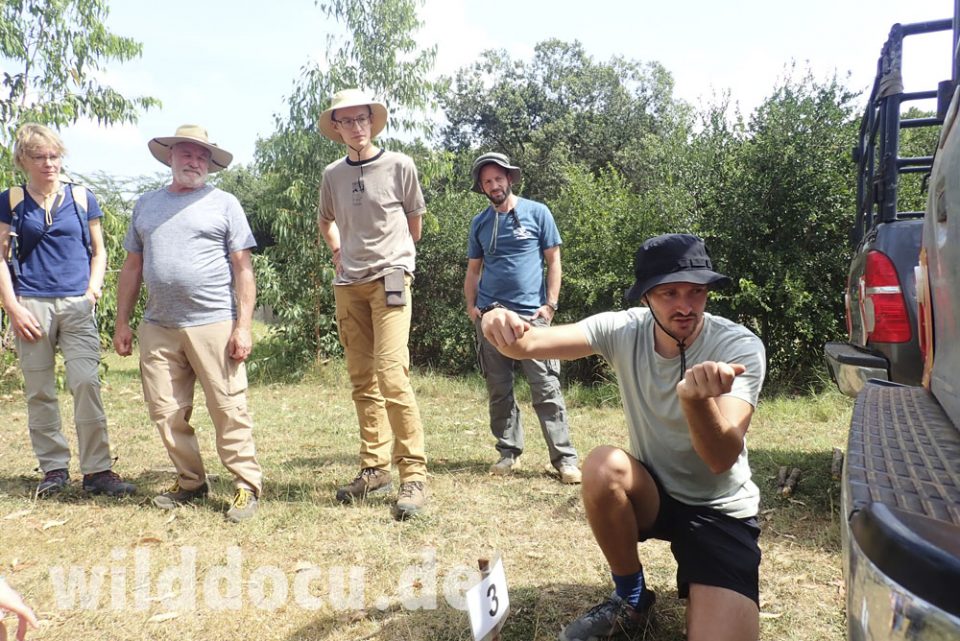
Probably all participants own a car at home, but with the off-road driving here in Africa, unusual questions arise: How many meters should you keep away from a Cape Buffalo? How much skew is not too skewed? When is the water level in the river too high for a crossing? Roland, the scientific leader of the expedition, replies to the last question: „As long as no house floats by, you should be fine.“
The next day things get serious: Counting animals, means, that one drives a pickup truck (4 in total) on defined routes, the others in the back do the actual counting or use a mobile phone to enter the data into the app called Cybertracker. As soon as animals – wild and domestic – are spotted, the driver gets a knock on the roof to slow down. The crew members on the back then start counting the different species. Can this get boring?
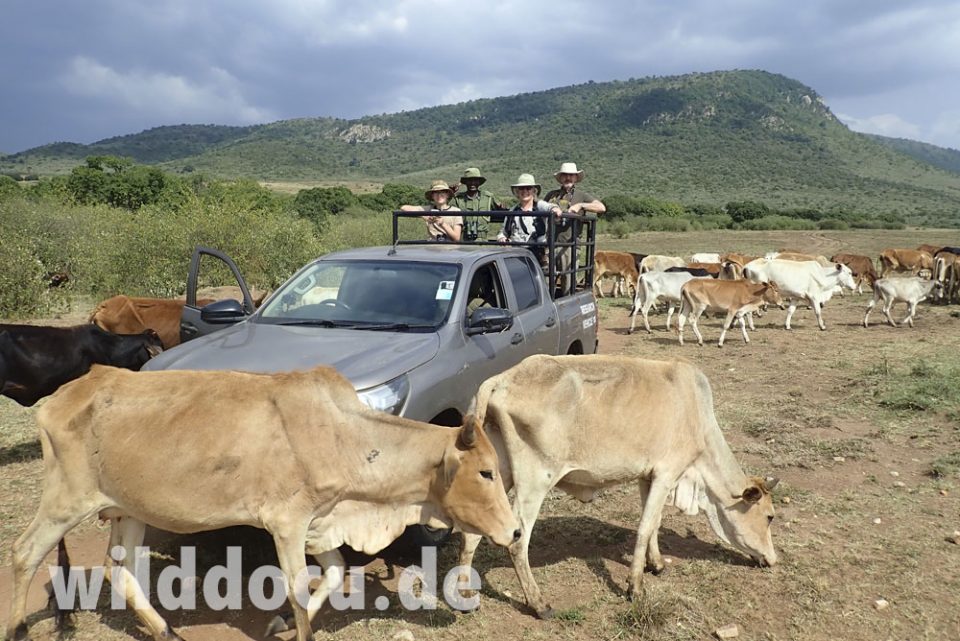
Certainly not at first. The biodiversity here amazes every animal lover for a long time. Each species of animal has to be identified first. What are the species characteristics? How do I distinguish the Thomson’s Gazelle from the Grant’s Gazelle or the Hartebeest from the Topi?
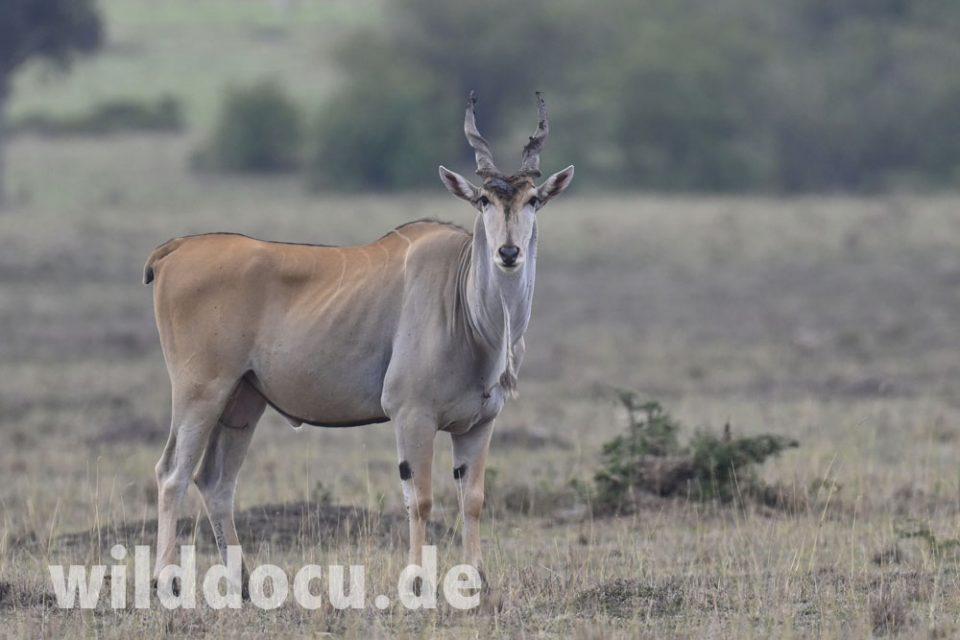
East African Eland 
Serengeti Topi 
Grant’s Gazelle 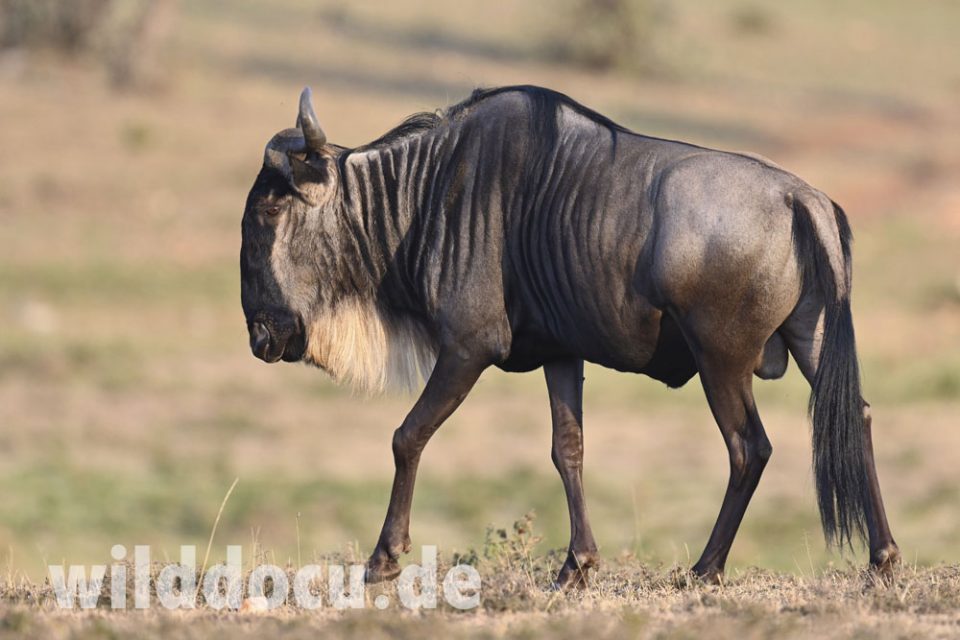
Western White-bearded Wildebeest 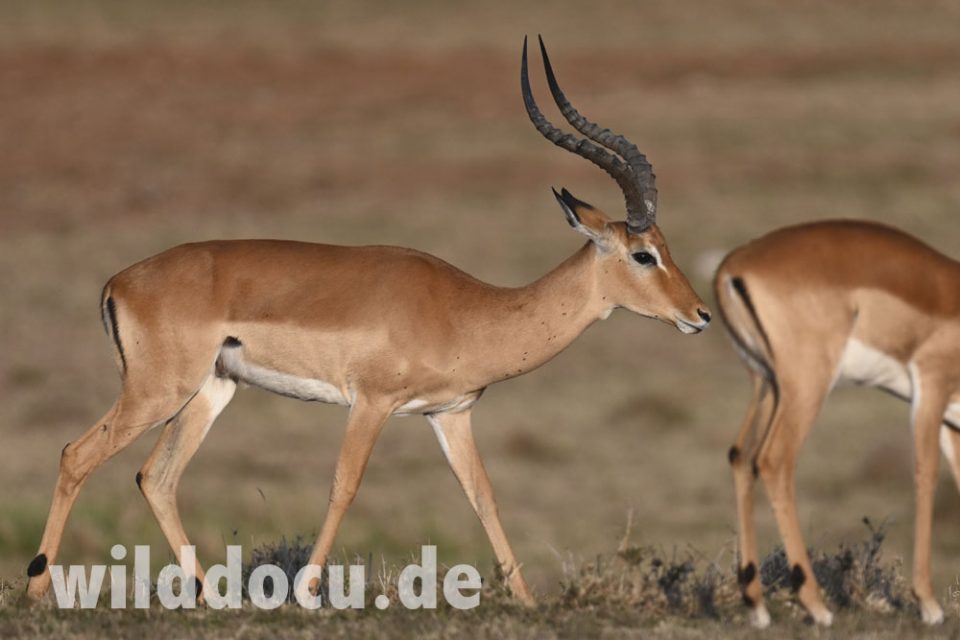
Common Impala 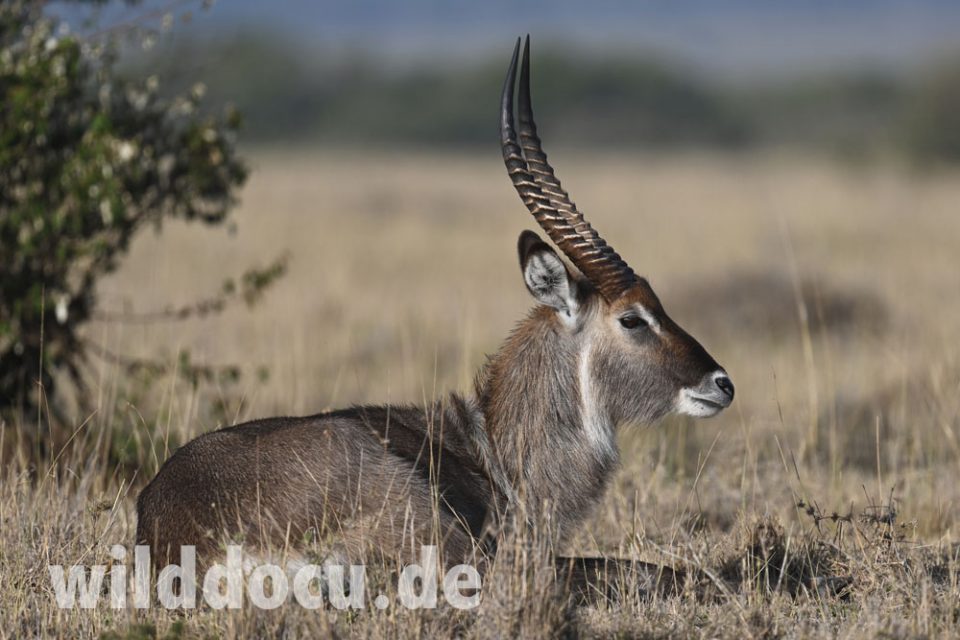
Defassa Waterbuck 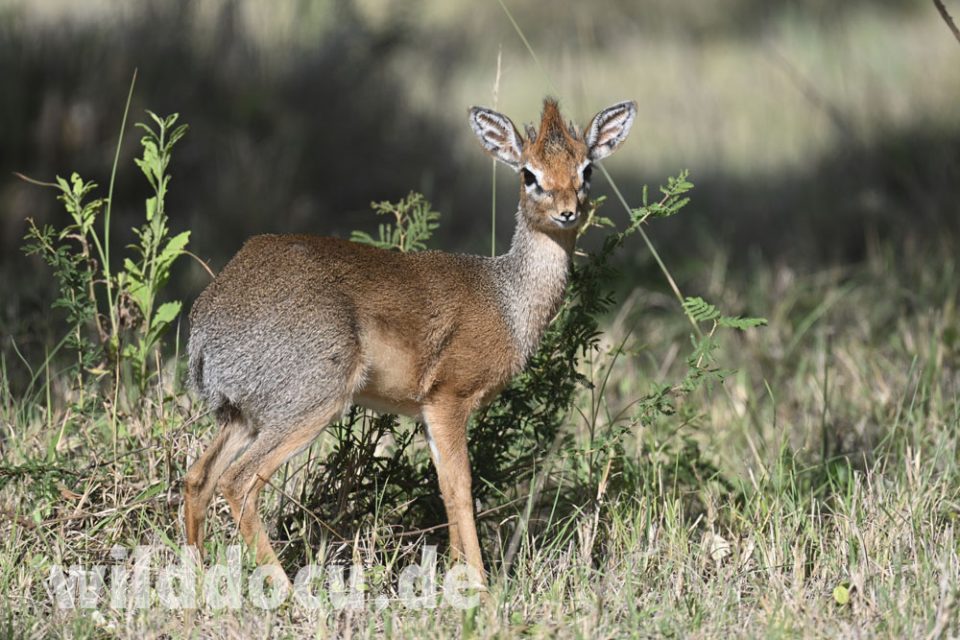
Dik-dik 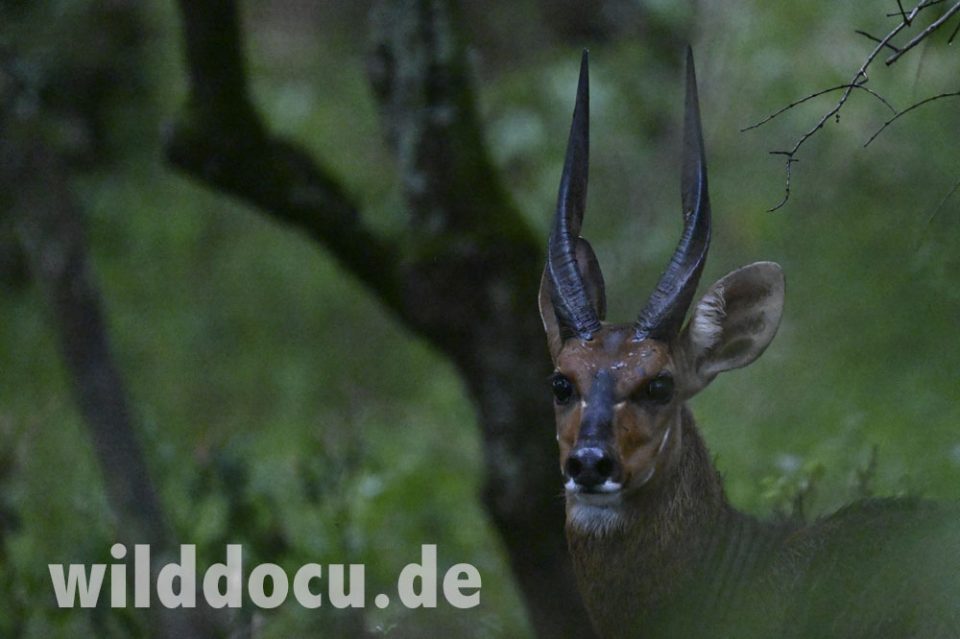
Cape Bushbuck 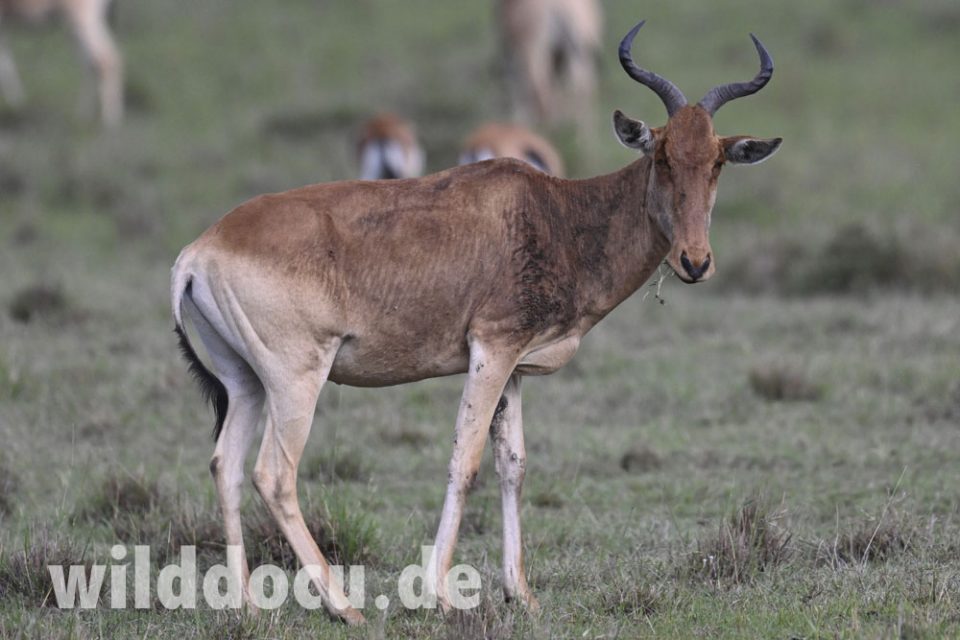
Coke’s Hartebeest 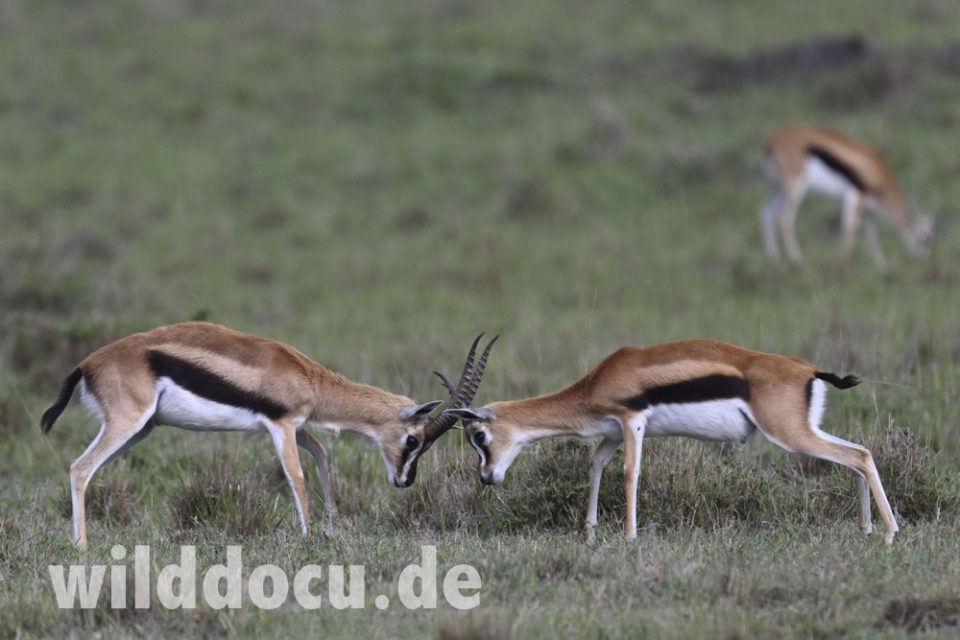
Thomson’s Gazelle 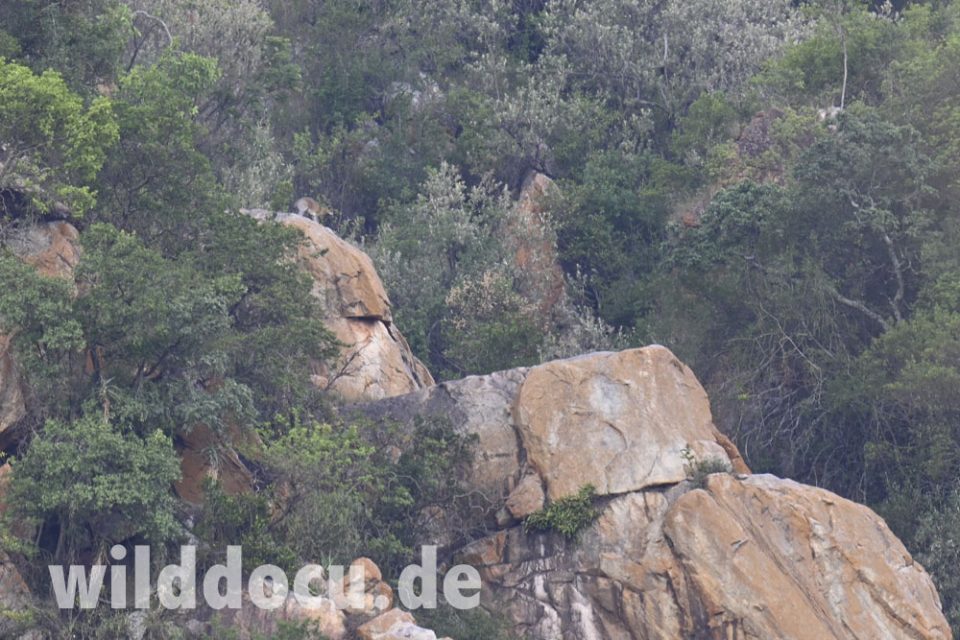
Maasai Klipspringer 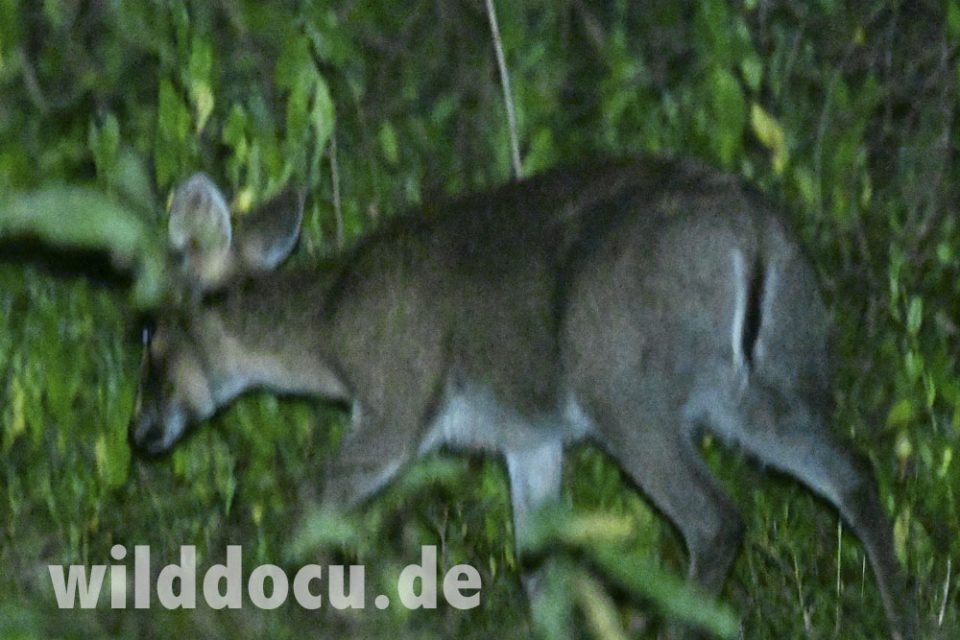
Bush Duiker
At some point, towards the end of the two-week tour, when the car comes to a stop in front of a herd of cattle for the umpteenth time and the counting result is finally to be transmitted, then the way the word “hundred and forty-eight” is pronounced, you might be able to discern a nuance of boredom 😉
On the other hand, there is no day without an animal highlight. We drive off-piste when someone spots animals and immediately knocks on the cab roof. Brief insertion: The more exciting the animal encounters, the harder the banging on the roof, the more impact it has on safety. Because the louder the knock, the more startled the driver is, the harder he brakes. Luckily, that will settle down over time.
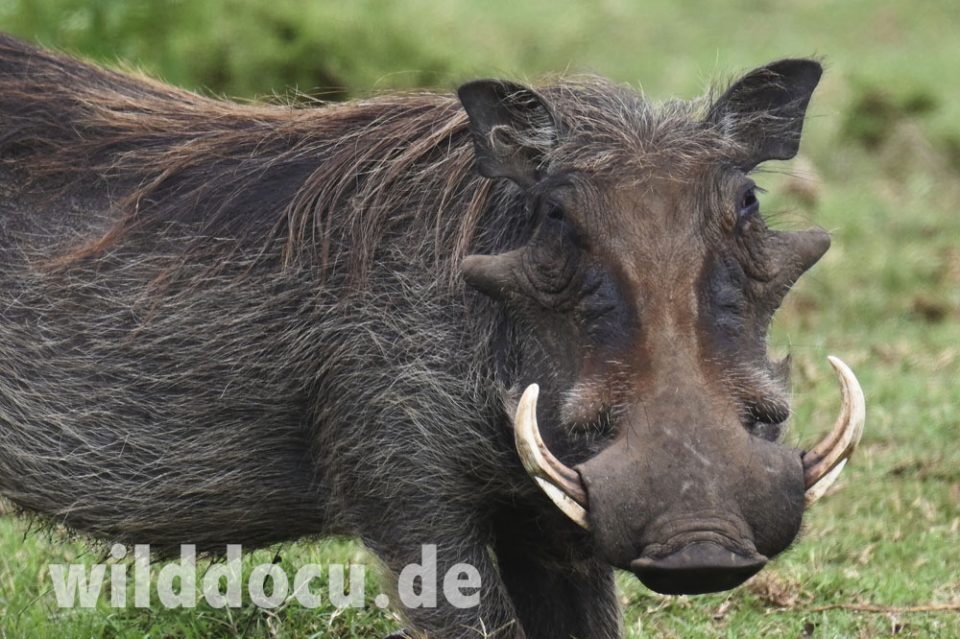
Talking about an animal highlight: The car has barely come to a standstill when a kind of silent explosion happens right next to the truck – several times. We have accidentally stopped right at the den of a warthog family. The pigs obviously need to think a short time about what to do. But then the first pig darts out of its cave and, accelerating full speed, creates a cloud of dust. Each animal that follows causes another cloud. Great sighting!
And there are so many more great mammal sightings:
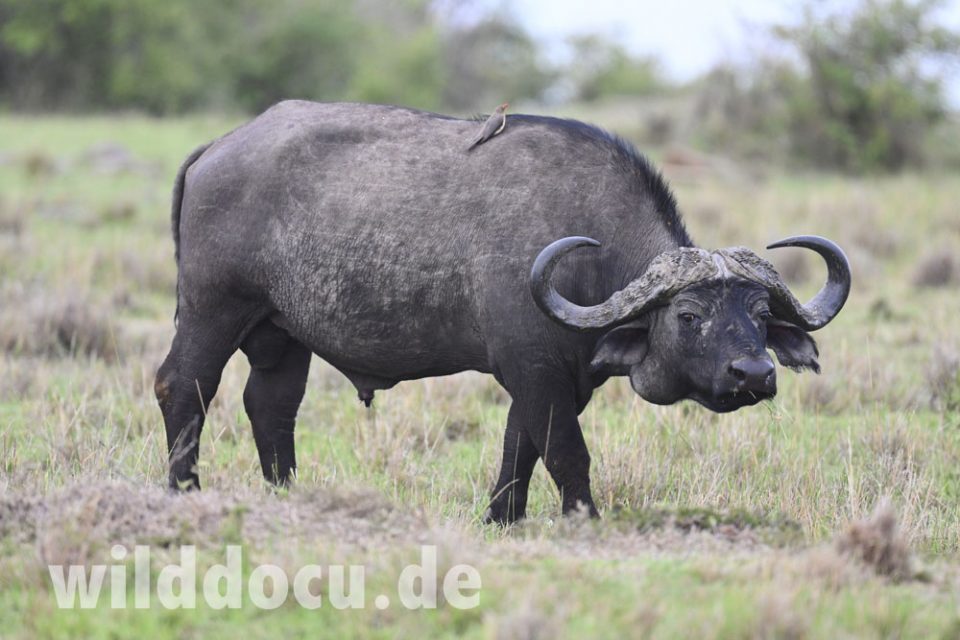
African Buffalo 
African Buffalo 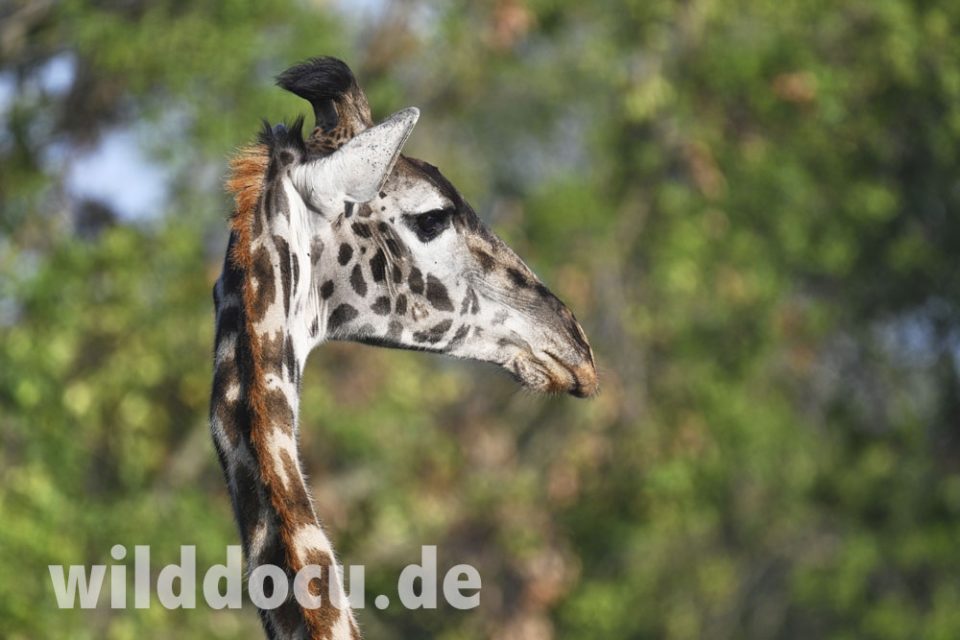
Giraffe 
White Rhino 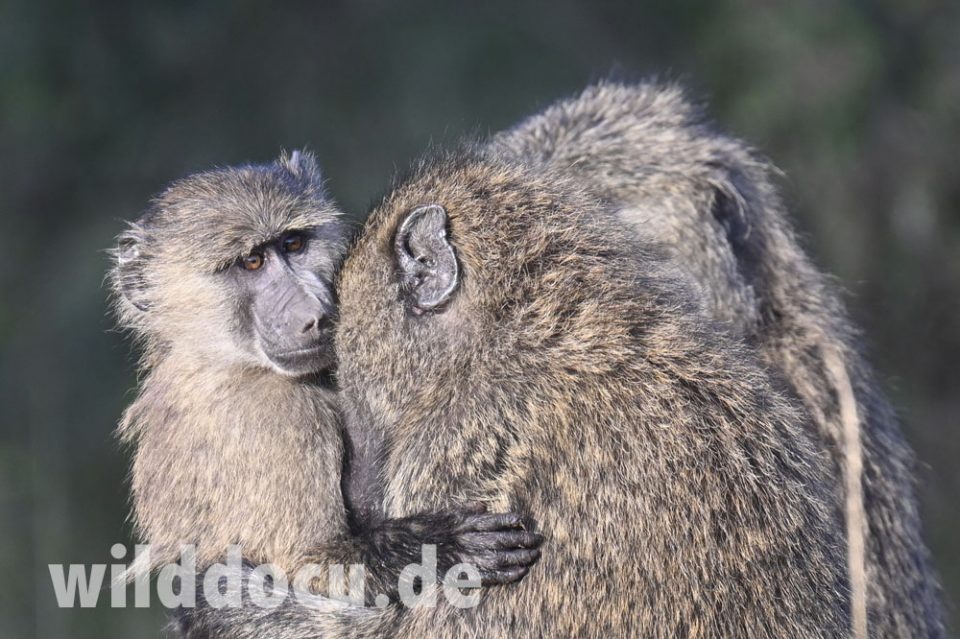
Olive Baboon 
Olive Baboon 
Olive Baboon 
African Savanna Elephant 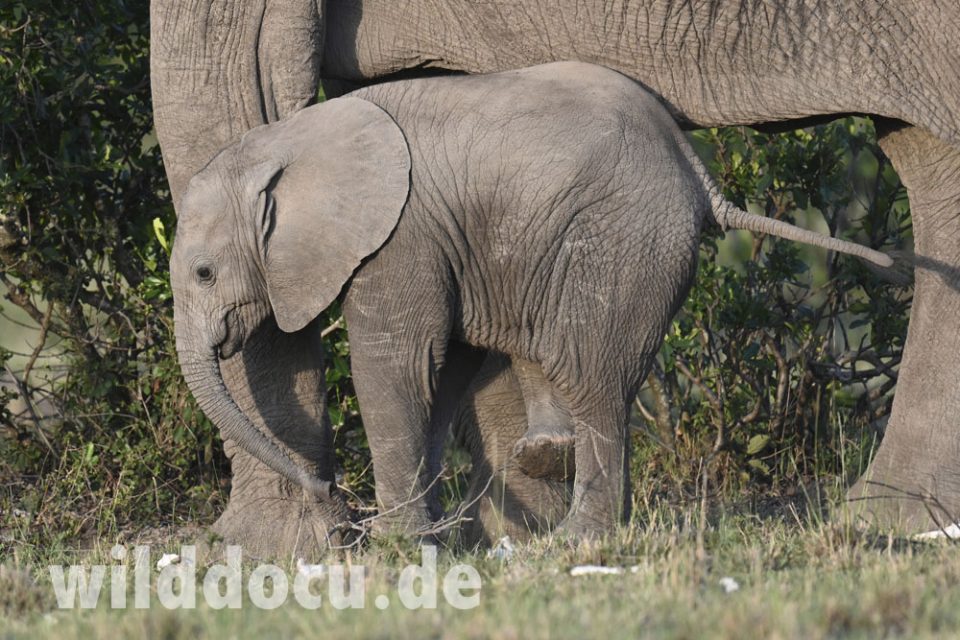
African Savanna Elephant 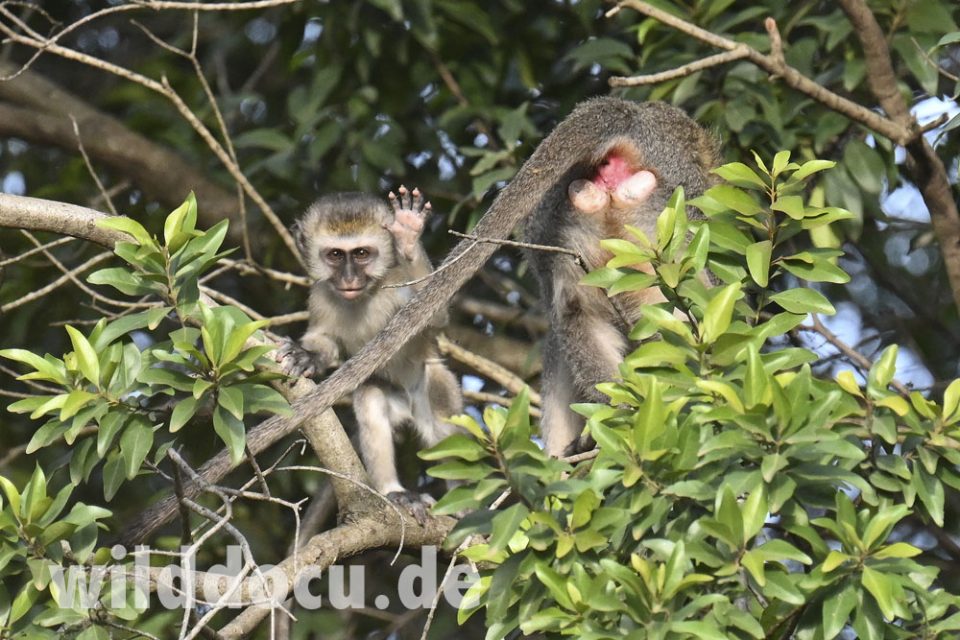
Vervet Monkey 
Vervet Monkey 
Vervet Monkey 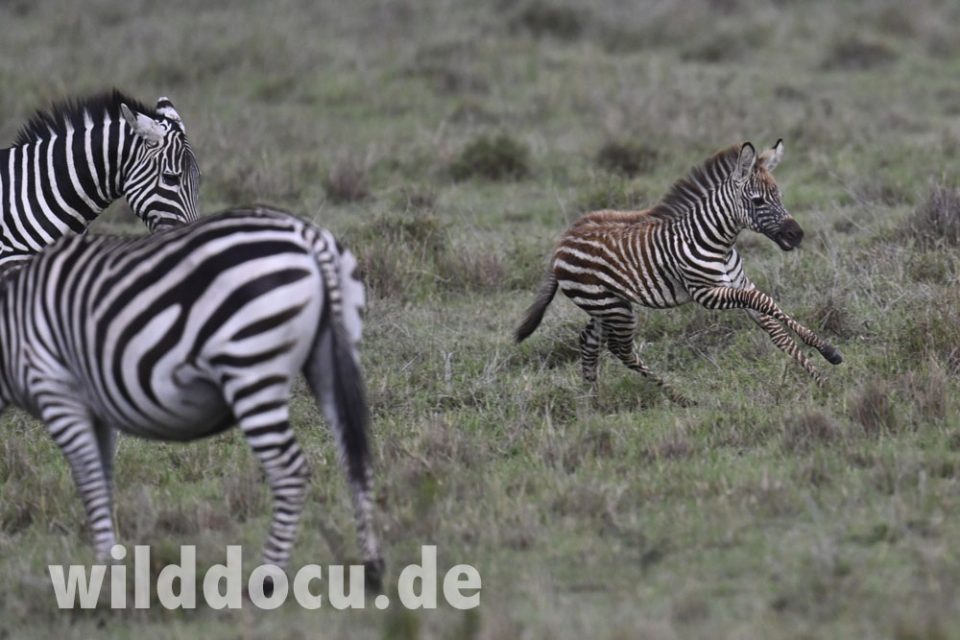
Plains Zebra 
Plains Zebra 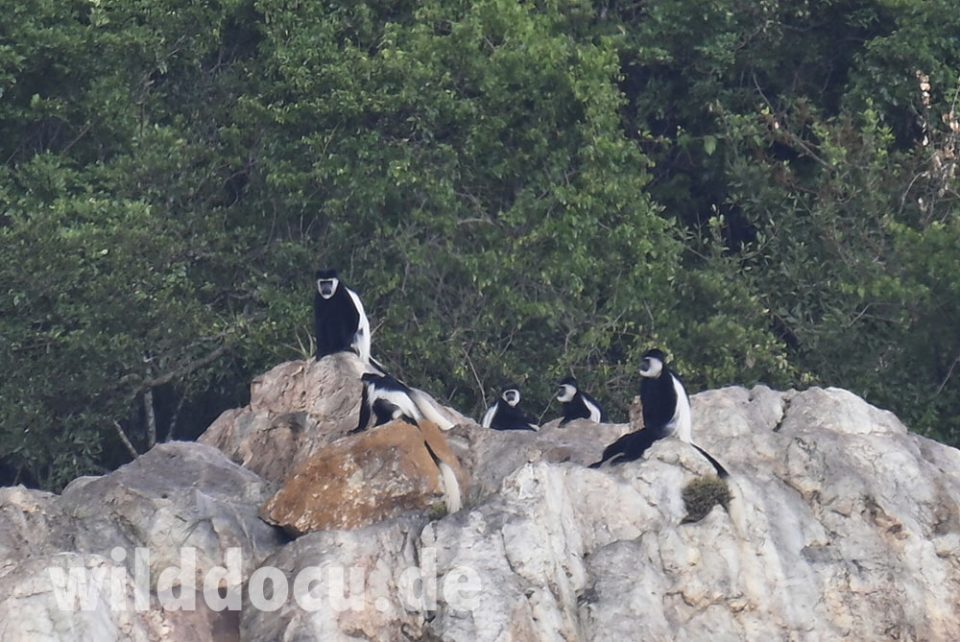
Mantled Guereza 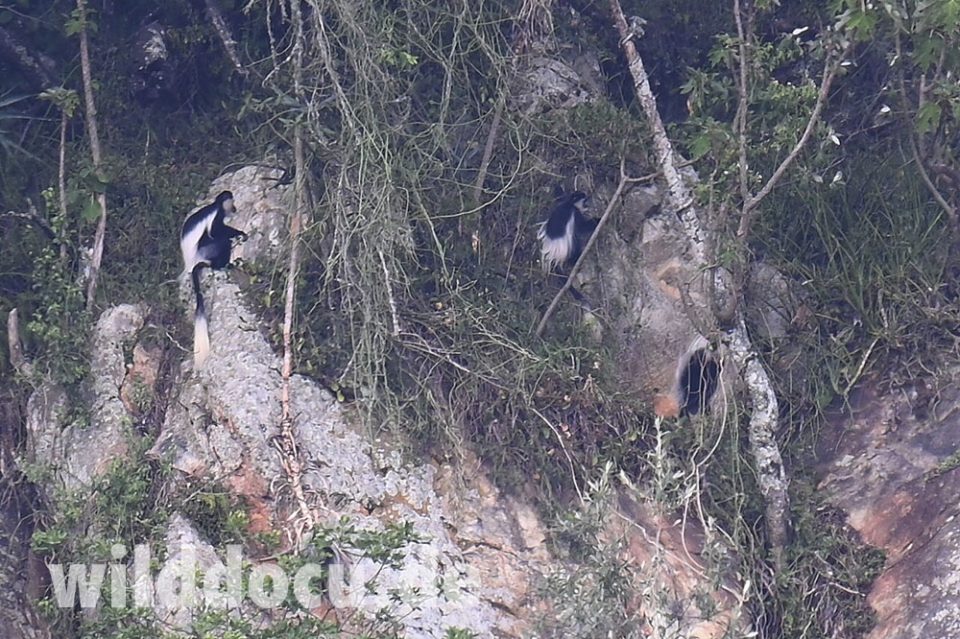
Mantled Guereza
At night there is a visitor in the camp. At breakfast, Michael and Isabelle, who saw it, pass around their cell phones with the photos and videos of evidence:
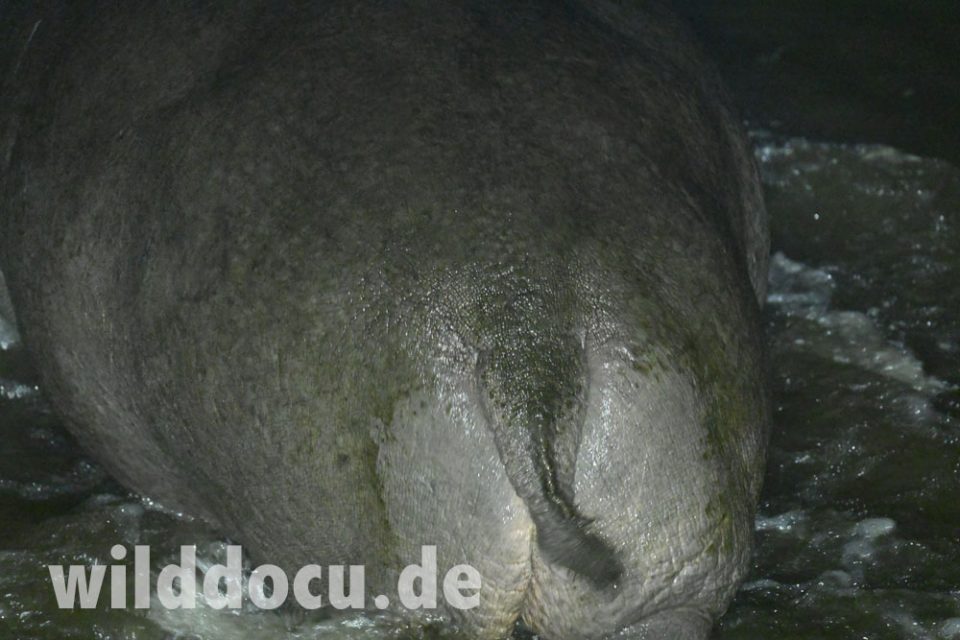
A hippopotamus found its way from the river into the garden of the Mara Training Center. Apparently the noise caused by the hippo’s grass plucking can wake you up.

During the training drive we had already come close to hippos that were lazing about in their water hole. But Hippos are said to be among the most dangerous animals in Africa, especially when you get between the animals and the nearest water, where they want to retreat for protection. Apparently the hippos don’t mind if you carefully open your zipper door and hold out the camera.
After a delicious roasted muesli with fruit and yoghurt, we go in search of animal droppings and tracks in the Ol Chorro area.

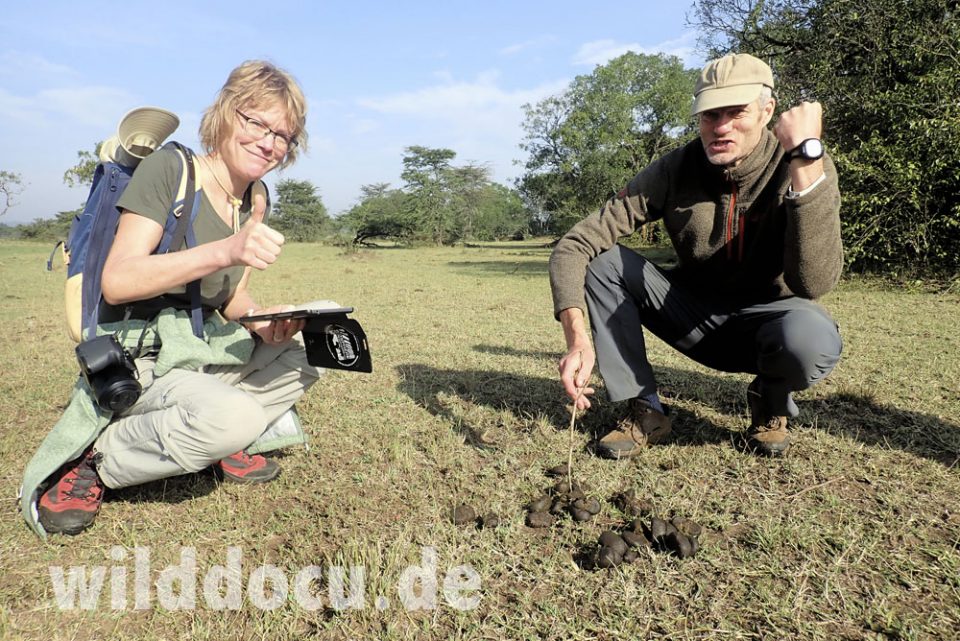
On top of a hill, the members of the Njapie family live in a few huts. Next to it, is the so-called Burma, a place, where the Njapies herd their cattle during the night surrounded by a simple fence. Accompanied by a ranger, the four of us walk in three circles around the settlement. Using the coordinates of found dung and hoof or paw prints, researcher Roland later draws the greater picture of the animal species that dare to approach the settlement and how close.

It is already known from previous studies that zebras, but also cheetahs, use the settlements as a „human shield“. This means that they consciously seek human proximity in order to be protected from lions, which tend to avoid humans. That’s okay for the residents, because the lions, who may come closer one day, first encounter the wild animals on the outskirts of the village. In this way their cattle herd is protected.
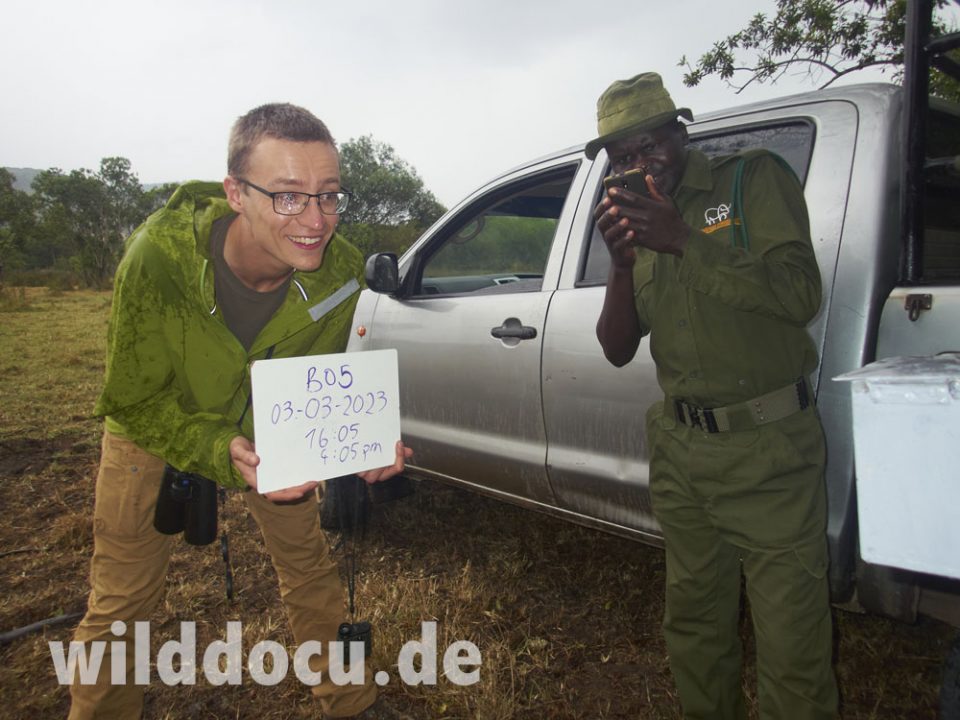
It’s March 1st: Today we check a trail camera for the first time. As always in the morning it is quite fresh. By now we have learned that a light down jacket can also be very useful in the tropics. Passing the herds of wild animals of the Ol Chorro savannah, we head towards a small forest. With the help of Google Earth, the coordinates and the combined skills of a motivated team, it quickly becomes clear that the camera must be somewhere close in the bushes. We also combine: As lions, we would take our break right here in the same bush.
Of course, lions are a factor in East Africa. Attacks on humans still occur today, albeit rarely. We talk about the subject, but do not want to get hysterical. It had been said to stand together. Don’t run if one of the big cats should show up. So, let’s get it over with. The concerns vanish at the latest after we have exchanged the memory card. Later in the camp we transfer the pictures on the computer. Click by click we go through the folders and note the species: Zebras, Banded Mongooses, Impalas and, and, and. In the end there is not a single photo of a lion.
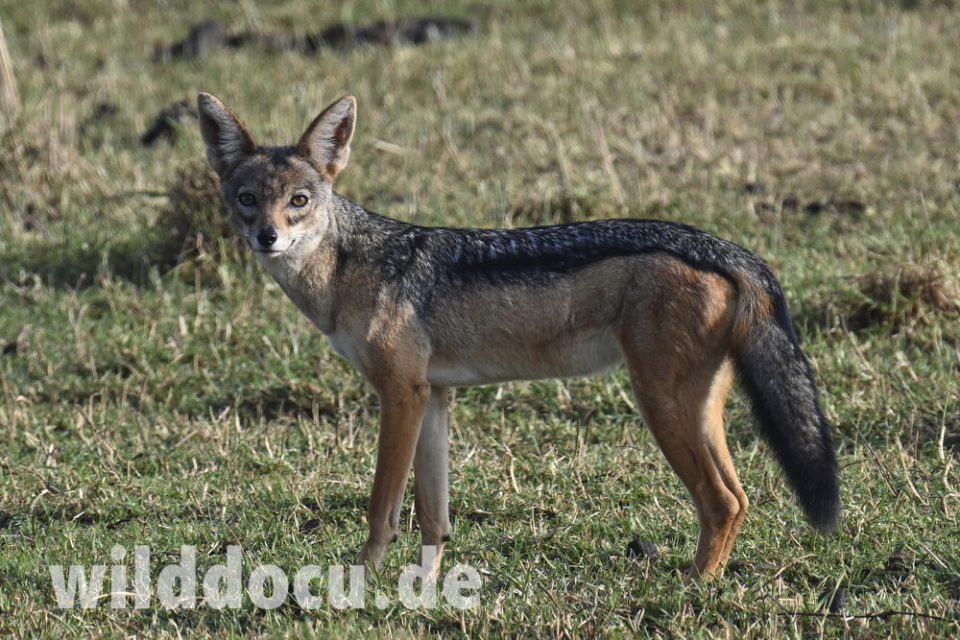
Black-backed Jackal 
Cheetah 
Cheetah 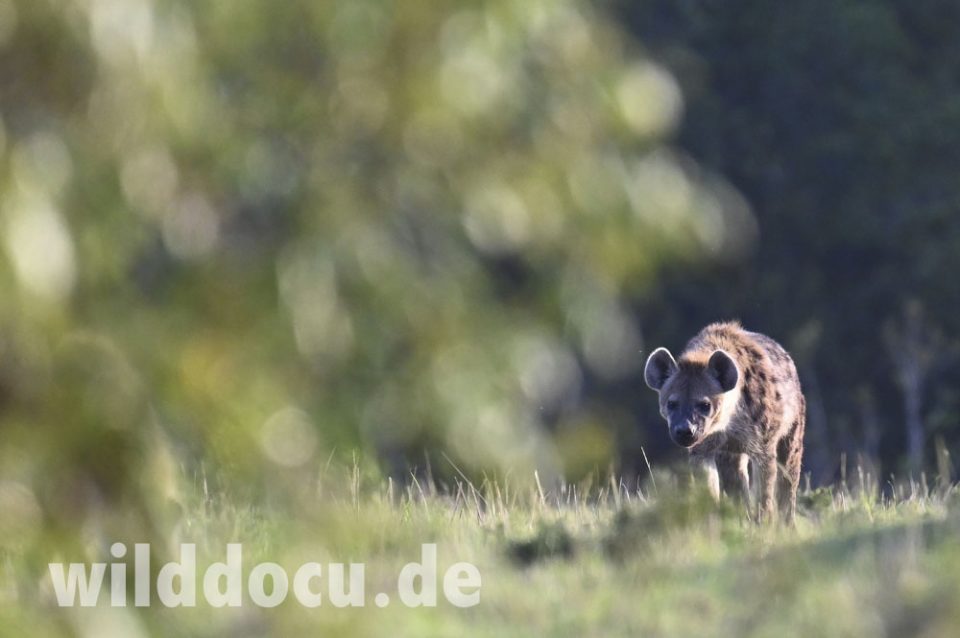
Spotted Hyena 
Spotted Hyena 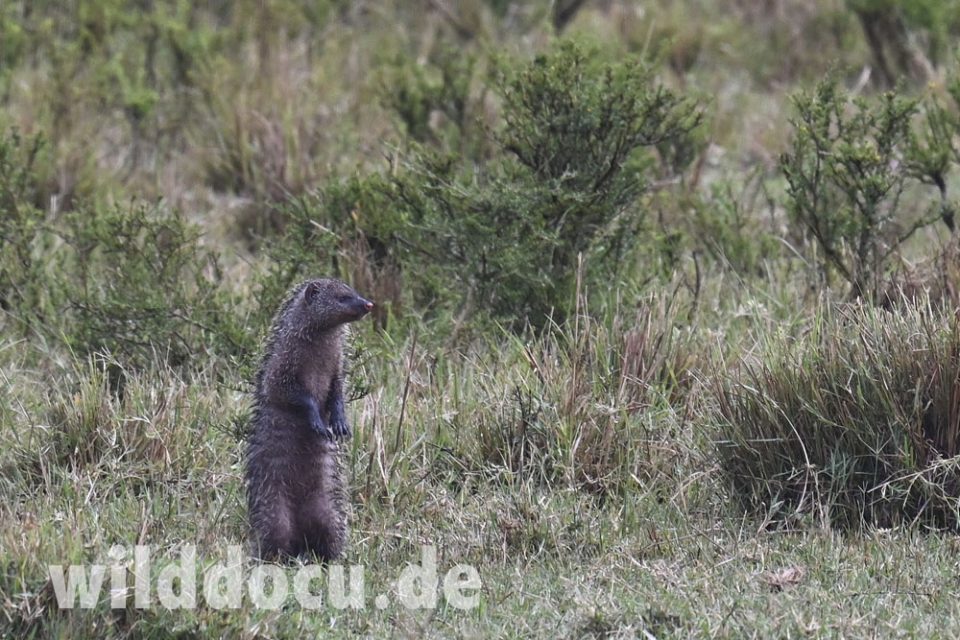
Banded Mongoose 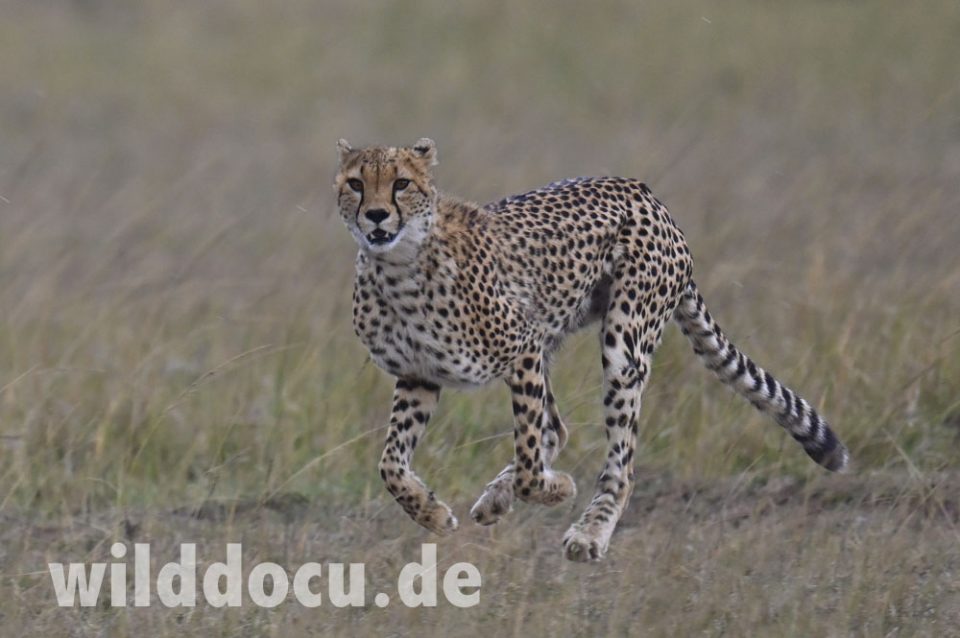
Cheetah 
Rusty-spotted Genet
Another brilliant day in the savannah: Oscar and I do a wildlife observing shift at the Kuluo waterhole between 2 and 4 pm.
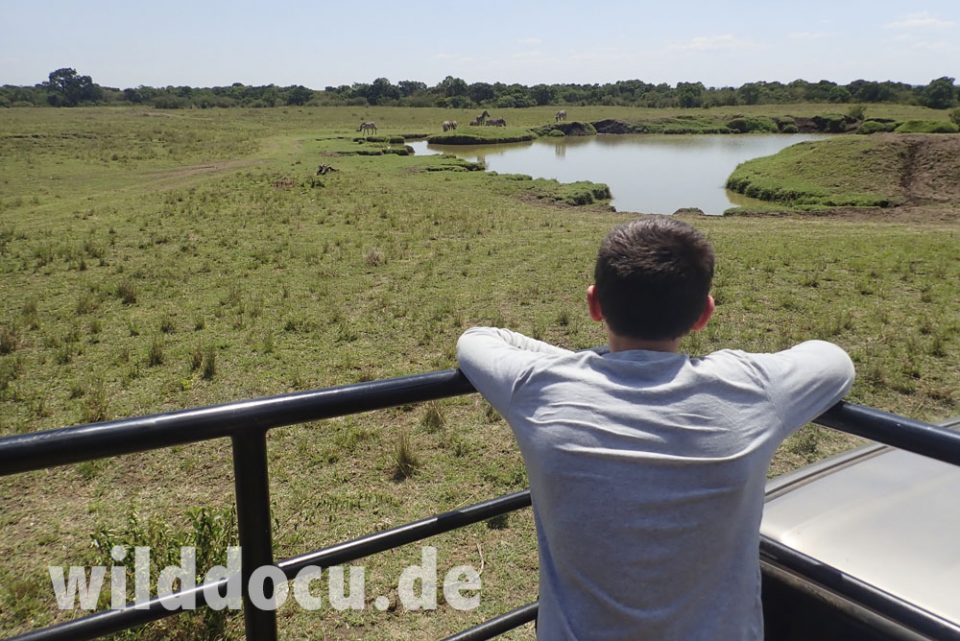

Of course there is not much to be expected at this time of the day. But of course this shift has also to be done in order to get evaluable results in the end. But again: There is no day without an animal highlight:
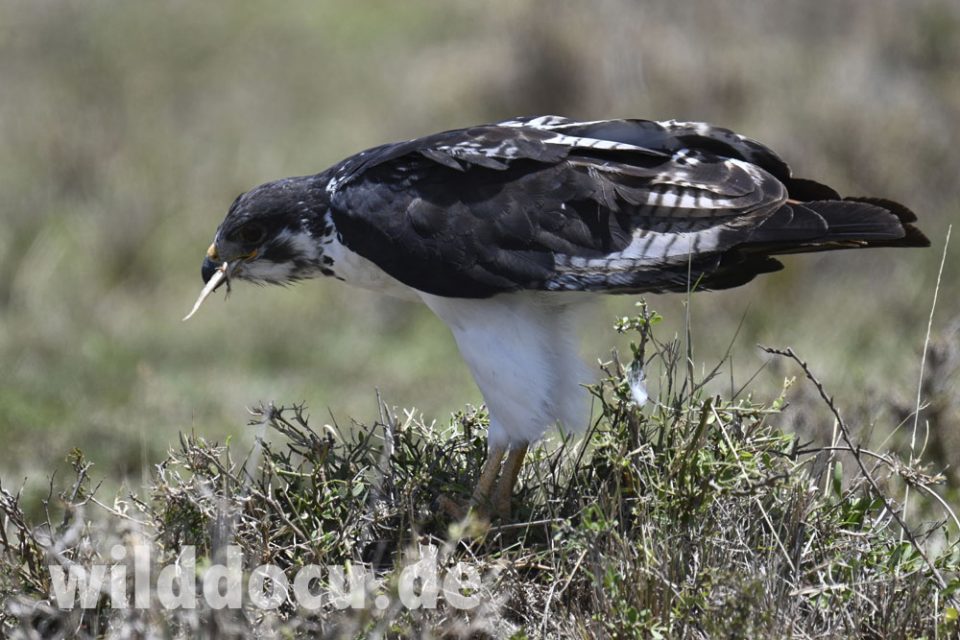
Oscar notes an Augur Buzzard. We get closer than ever to this rather shy bird. Finally, we even witness how it catches a lizard from the ground and devours it right in front of us. And that’s just one of 1127 bird species reported on eBird for Kenya. When you think of savannah and safari, you don’t necessarily think of birds. But they are there: plentiful, diverse and often colorful.
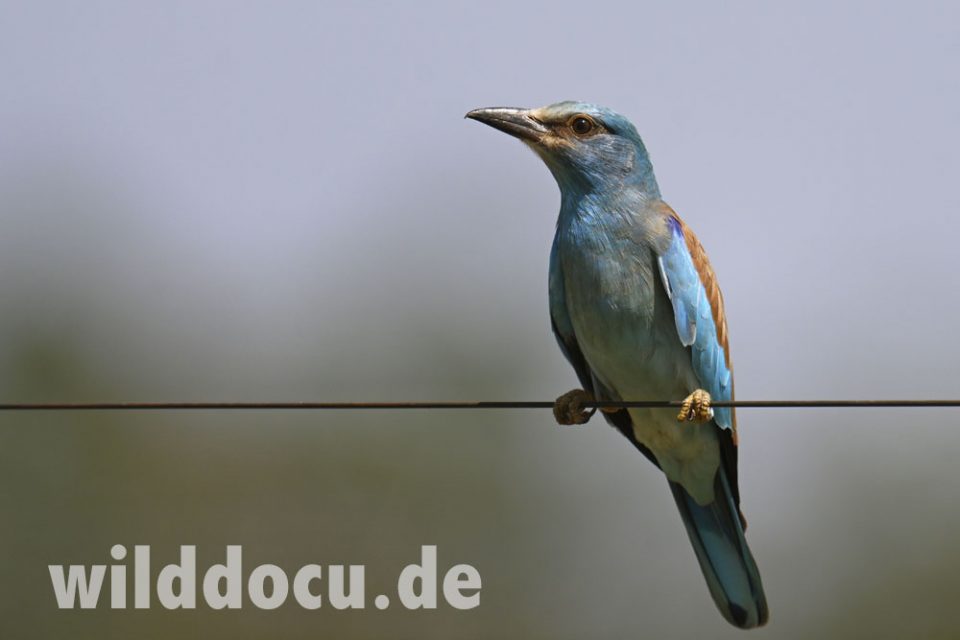
European Roller 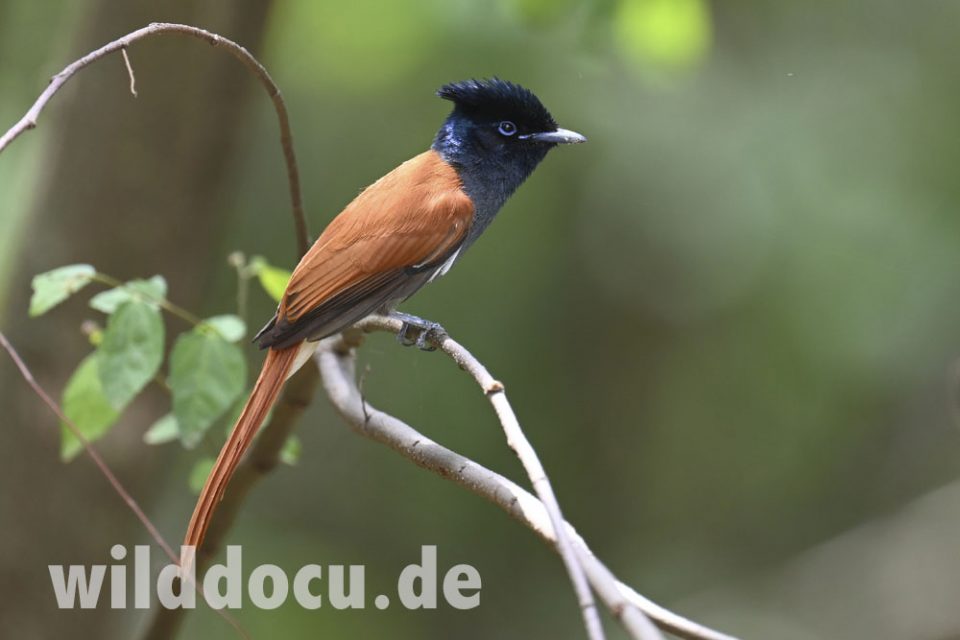
African Paradise-Flycatcher 
Cinnamon-chested Bee-eater 
Purple Grenadier 
African Pygmy Kingfisher 
Superb Starling 
White-bellied Bustard 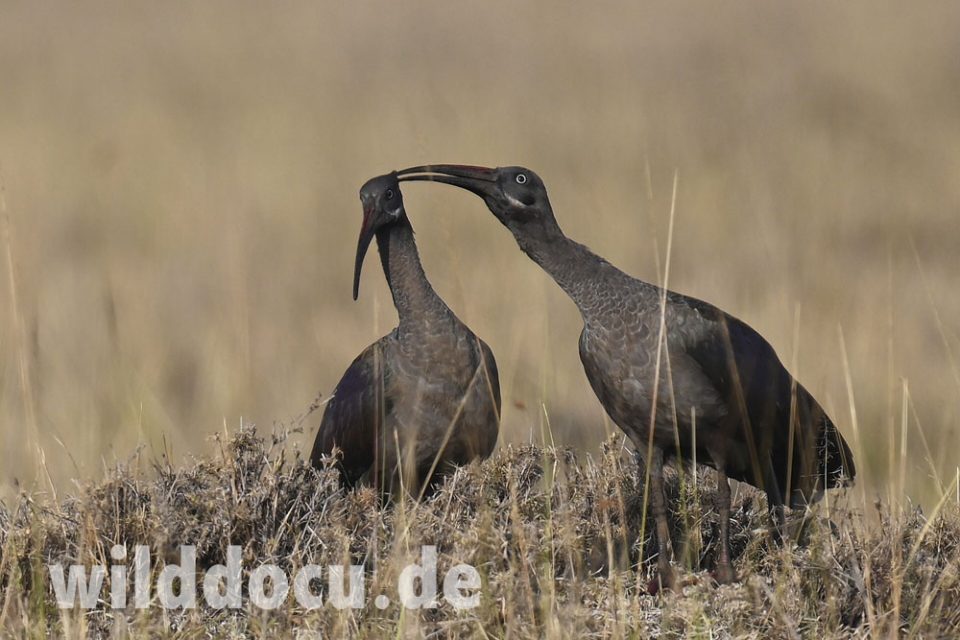
Hadada Ibis 
White-fronted Bee-eater 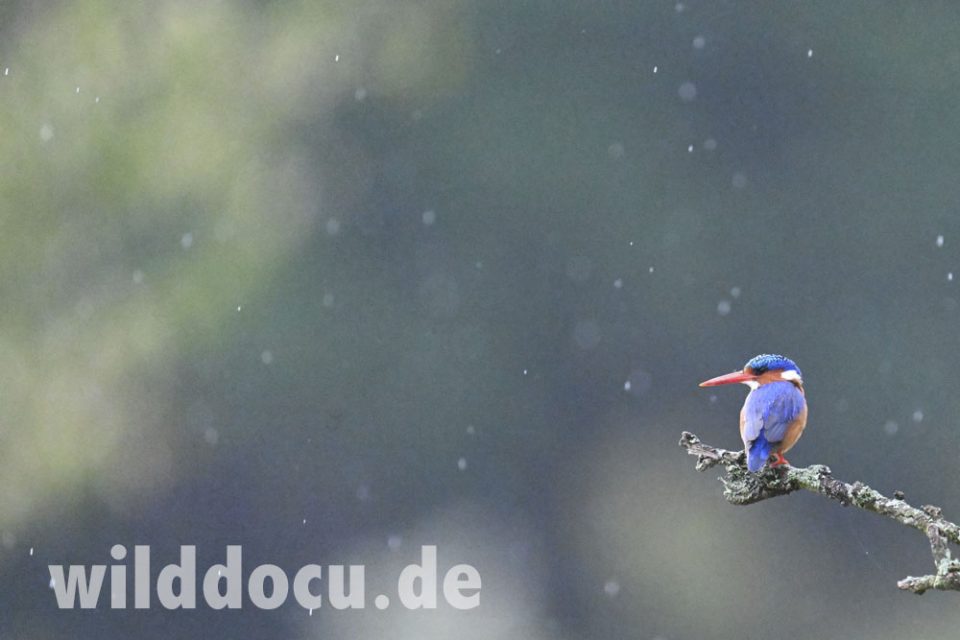
Malachite Kingfisher
A „Night Drive“ has been announced for the evening, i.e. a patrol trip to specifically track down and document nocturnal animals. We count what appears in the light of the vehicle.

White-tailed Mongoose 
Domestic cat 
Dik-dik 
Cape bushbuck 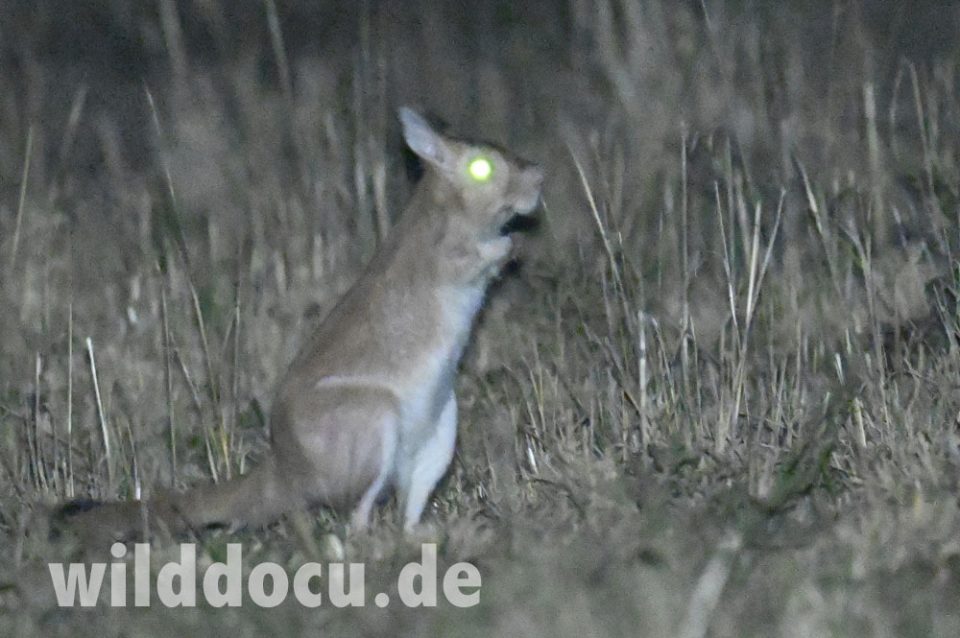
East African Springhare 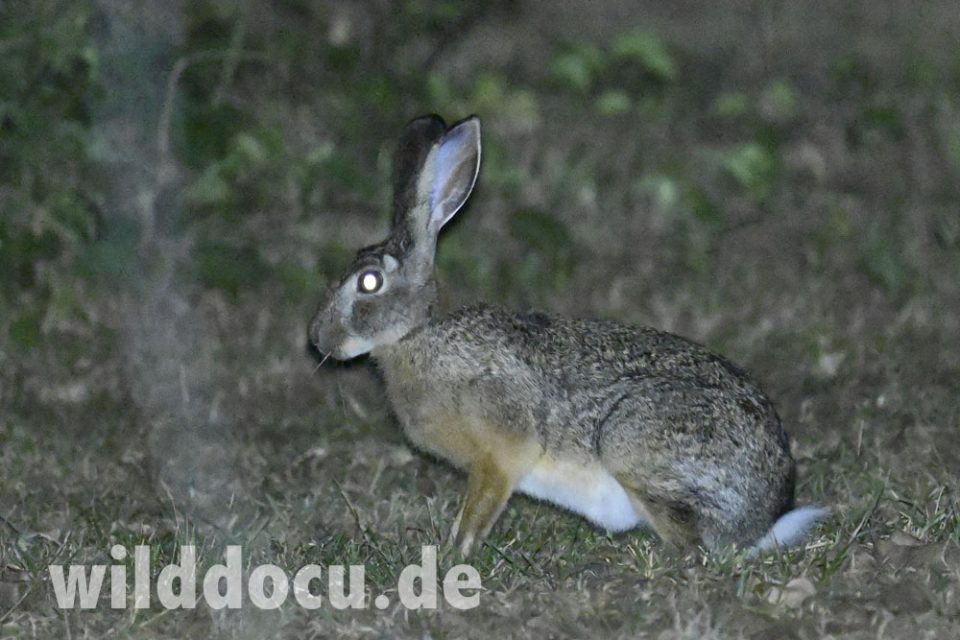
African Savanna Hare 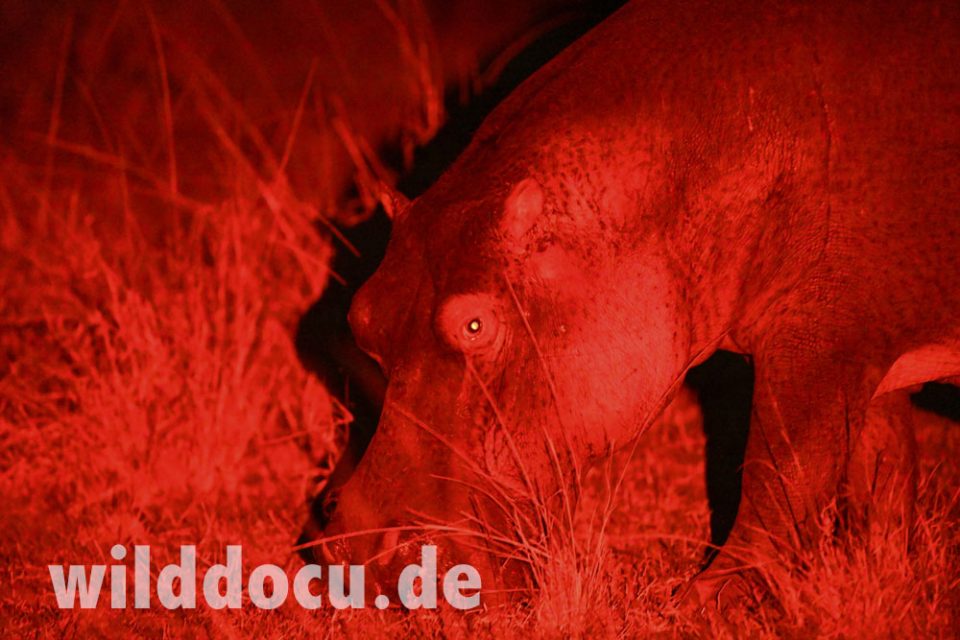
In addition, the colleagues in the back are equipped with red flashlights, which can be used to search the area to the left and right of the vehicle. With red light it is not possible to shine as far, but the idea is that the animals will be less disturbed. For a bush baby we first encounter, this is obviously true.
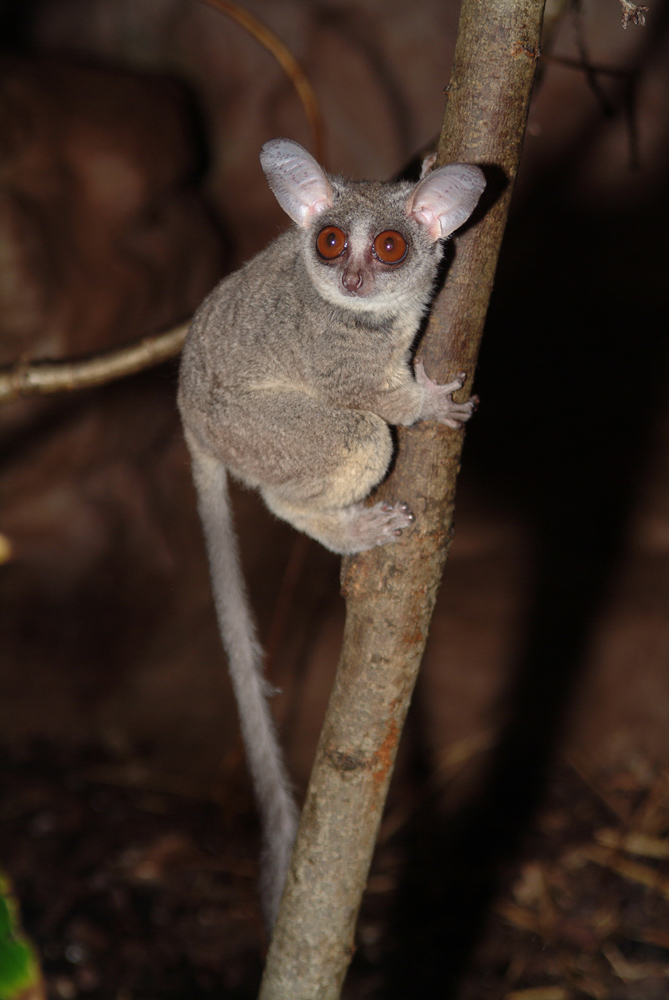
In the camp I had already seen one of these small, nocturnal monkeys. The name fits: With its infant-like screams, the Senegal Galago – to give it a more precise name – supposedly draws the attention of fellow species to its territory. Now he’s sitting there in the glow of the lamp: his body just 20 centimeters long, his tail, which is bushy at the end, a little longer – up to 30 centimetres. With big eyes and sticking out long ears, it looks like the young Yoda from Star Wars in a romper suit.
For the penultimate day we invite a school class:
When we drive up to the Munyas elementary school with our vehicles, everyone, students and teachers, is already lined up in front of the school building. The little ones are extremely shy. The citizen scientists do their best to thaw them out:

We invite them for a safari. Everyone in the team gives their best. Back at camp Steve and Birgit use a laptop to show which animals live in their homeland …

… while Andreas explains to a group of four students how a camera trap works. One of his protégés suddenly strokes his hair.
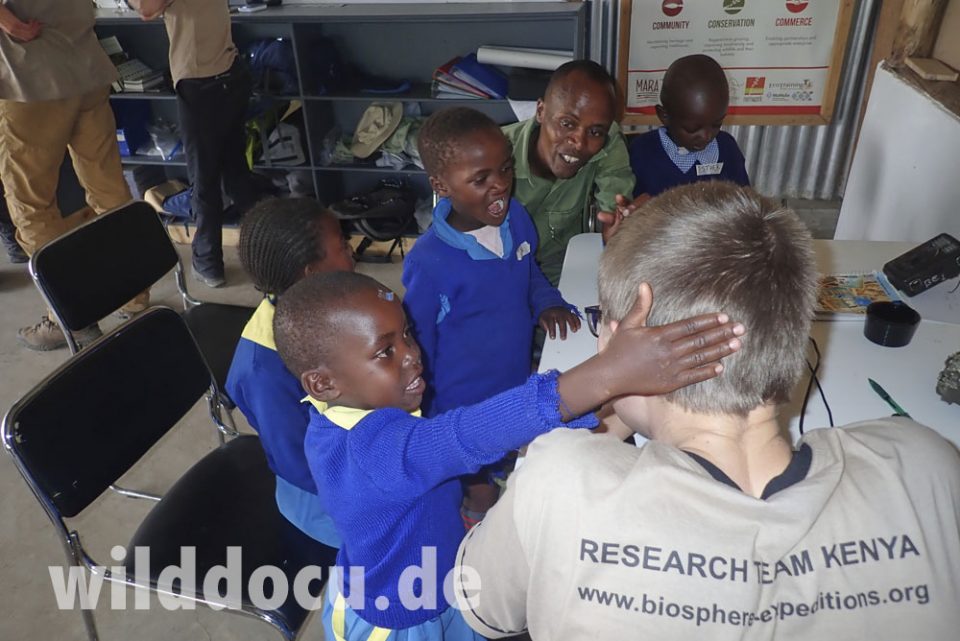
Eventually it is not known how much the children have really learned and what they take home. But there is hope, that they will ultimately understand that nature conservation is a good thing, which eventually also generates jobs, from which they can benefit.
***** ***** *****
Bad, better, best mammalwatching
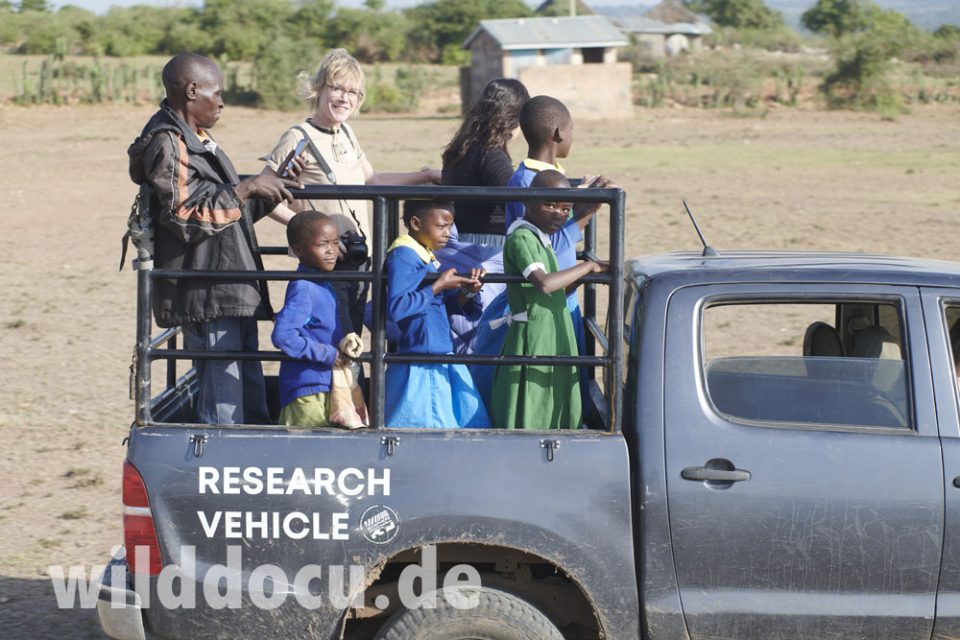
Now, let’s get back to the headline: „The world’s best mammal watching“. Is it really? Yes! Of course everybody has different demands. And someone who wants to see as many species as possible in a given time or wants to see more places, will probably not be a 100% satisfied with this trip. But:
Let me just summarise a few facts from the Mammalwatching website concerning the pros and cons of mammalwatching: Mammalwatching mostly has a positive impact on mammal conservation. It brings revenue to areas, where there are often no or few other sources of income. And there are more and more examples, where tourism has spurred local conservation efforts.
Equally, it is inescapable that traveling and tourism has its drawbacks and can have a negative influence on ecosystems and their wildlife. Plane travel releases significant amounts of carbon dioxide, while infrastructure such as roads and lodges carry their own ecological penalty. While in many cases tourism revenue benefits local communities, in others most of the profits are captured by a handful of wealthy businesses or sequestered by government agencies. Ecotourism can also lead to immigration that puts more pressure on local wildlife.
But let’s get back to the positive aspects of mammal watching: Sharing information on where to observe animals has let to regular visits to certain sites and has eventually established tourism activities. And there is a clear connection between tourism revenue and the willingness to protect an area and the wildlife in it.
Furthermore mammalwatching provides data on species sightings. Sight records collected by mammalwatchers have provided information on species range extensions, new records, and the rediscovery of “lost” species, as well as unique behaviours of different mammals. By submitting these informations to IUCN Species Survival Commission groups or databases like inaturalist mammalwatchers make a big contribution to conservation.
Many mammalwatchers are interested in supporting conservation projects in the field. And they do. In some cases visits by mammalwatchers directly funds research projects, such as the Mandrill research in Lope National Park in Gabon.
And this is what the Kenia Biosphere Expedition features:
- it offers phenomenal wildlife watching
- a lot of the participant’s money goes directly into research and eventually conservation
- it provides data on species sightings
- the message is passed to the local population
- and in general: The participants spend their time, motivation and manpower directly to maintain what they want to do: watching and enjoying wildlife
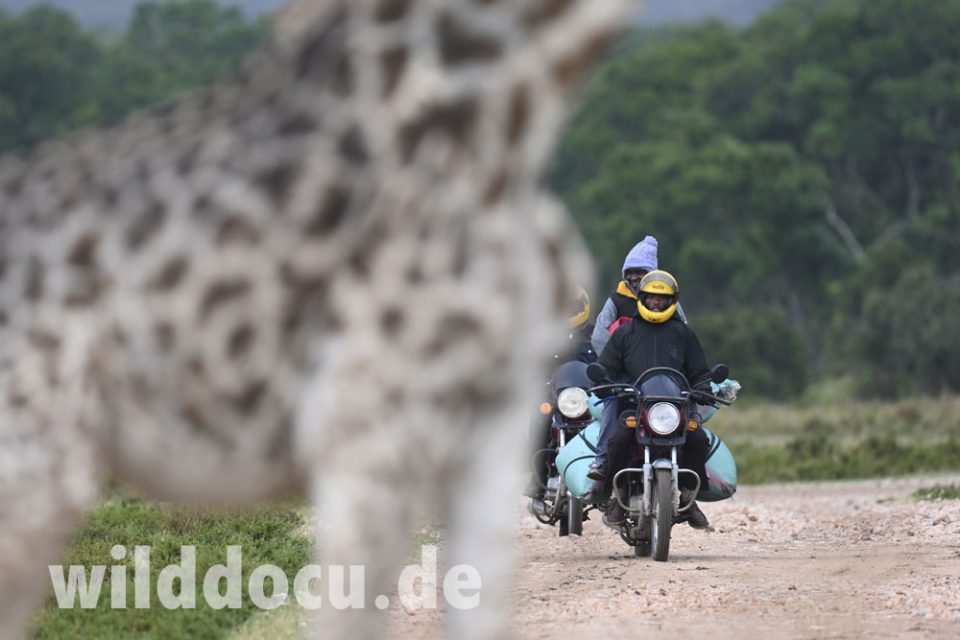
Conclusion: The Kenia biosphere expedition combines fruitful mammal watching and effective conservation work ideally like on no other trip I have done before or read about and therefore IT IS, from my perspective,
THE BEST MAMMAL WATCHING.
More info
The study area

The study area is on the north side of the Masai Mara Triangle in Kenia. The Masai Mara itself is a national game reserve, contiguous with the Serengeti National Park in Tanzania. The Citizen scientists do their wildlife observations in three different conservancies: Ol Chorro, Enonkishu and Mbokishi, which are part of the Greater Mara ecosystem. While in the national park and the game reserve the natural world seems to be intact (one day spent in the game reserve), the conservancies are more or less populated, which leads to population pressure and human-wildlife conflicts. Ultimately, the aim for the conservancies is to achieve the coexistence of wildlife and the local population.
The camp
The so called Mara Training Center (MTC) is located next to the Mara River, which is famous for the river crossings of two million wildebeest, zebras and antelopes during the big migration in August.
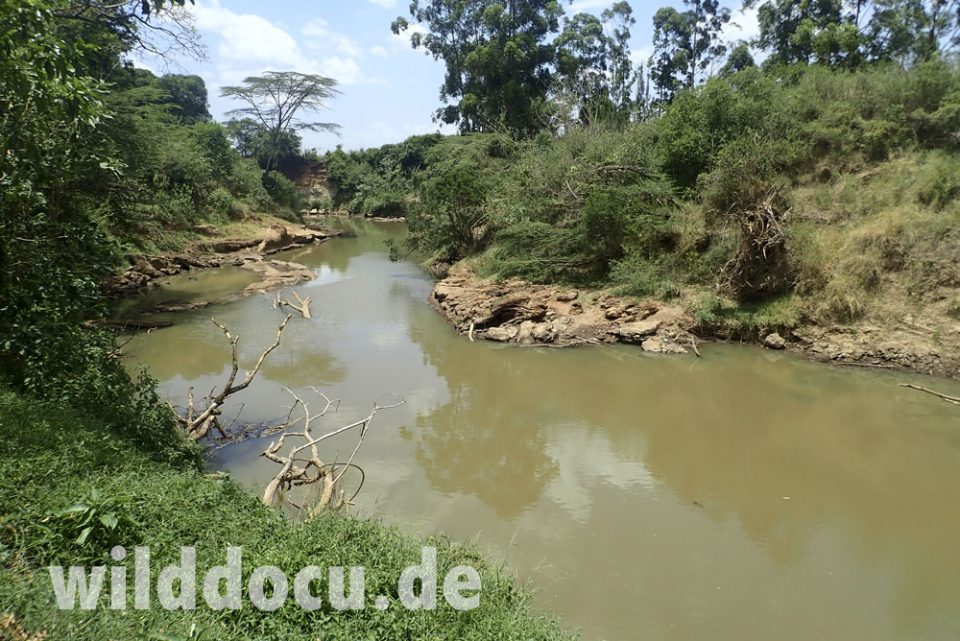
The participants are assigned to one-room bungalows, with walls on three sides and a tent-like fabric with fly screen and zipper on the front side. The fly screen has the great advantage that it remains pleasantly airy inside and you get the impression that your bed is right in the jungle – that’s how close you feel to the animals that produce all those chirps, grunts and screams during the tropical nights.

About
biosphere expeditions is a non-profit, visionary and award-winning conservation volunteering organisation. They empower people to get involved with nature through their expeditions, which unite citizen science, ethical volunteering and hands-on wildlife conservation. They offer to travel to remote and beautiful places, learn new skills and meet like-minded people from around the world.
Mammal taxa seen during the 2-weeks-trip through Kenia*
| 1 | Heterohyrax brucei | Bush Hyrax | |
| 2 | Loxodonta africana | African Savannah Elephant | |
| 3 | Lepus victoriae | African Savannah Hare | |
| 4 | Cercopithecus mitis | Blue Monkey | |
| 5 | Chlorocebus pygerythrus | Vervet Monkey | |
| 6 | Papio anubis | Olive Baboon | |
| 7 | Colobus guereza | Mantled Guereza | |
| 8 | Galago senegalensis | Northern Lesser Galago | |
| 9 | Pedetes surdaster | Eastern Springhare | |
| 10 | Paraxerus ochraceus | Ochre Bush Squirrel | |
| 11 | Alcelaphus buselaphus | Hartebeest | |
| 12 | Connochaetes taurinus albojubatus | Eastern White-bearded Wildebeest | |
| 13 | Connochaetes taurinus mearnsi | Western White-bearded Wildebeest | |
| 14 | Eudorcas thomsonii | Thomson’s Gazelle | |
| 15 | Madoqua kirkii | Kirk’s Dik-dik | |
| 16 | Nanger granti | Grant’s Gazelle | |
| 17 | Sylvicapra grimmia | Bush Duiker | |
| 18 | Oreotragus oreotragus | Klipspringer | |
| 19 | Kobus ellipsiprymnus | Waterbuck | |
| 20 | Redunca redunca | Bohor Reedbuck | |
| 21 | Syncerus caffer | African Buffalo | |
| 22 | Tragelaphus oryx | Common Eland | |
| 23 | Tragelaphus sylvaticus sylvaticus | Southern Bushbuck | |
| 24 | Giraffa camelopardalis tippelskirchi | Maasai Giraffe | |
| 25 | Phacochoerus africanus | Common Warthog | |
| 26 | Hippopotamus amphibius | Common Hippopotamus | |
| 27 | Lupulella mesomelas | Black-backed Jackal | |
| 28 | Acinonyx jubatus jubatus | Southern and Eastern African Cheetah | |
| 29 | Panthera leo | Lion | |
| 30 | Atilax paludinosus | Marsh Mongoose | |
| 31 | Ichneumia albicauda | White-tailed Mongoose | |
| 32 | Mungos mungo | Banded Mongoose | |
| 33 | Crocuta crocuta | Spotted Hyena | |
| 34 | Genetta maculata | Rusty-spotted Genet | |
| 35 | Equus quagga boehmi | Grant’s Zebra | |
| 36 | Ceratotherium simum | White Rhinoceros | |
| 37 | Diceros bicornis michaeli | Eastern Black Rhinoceros |

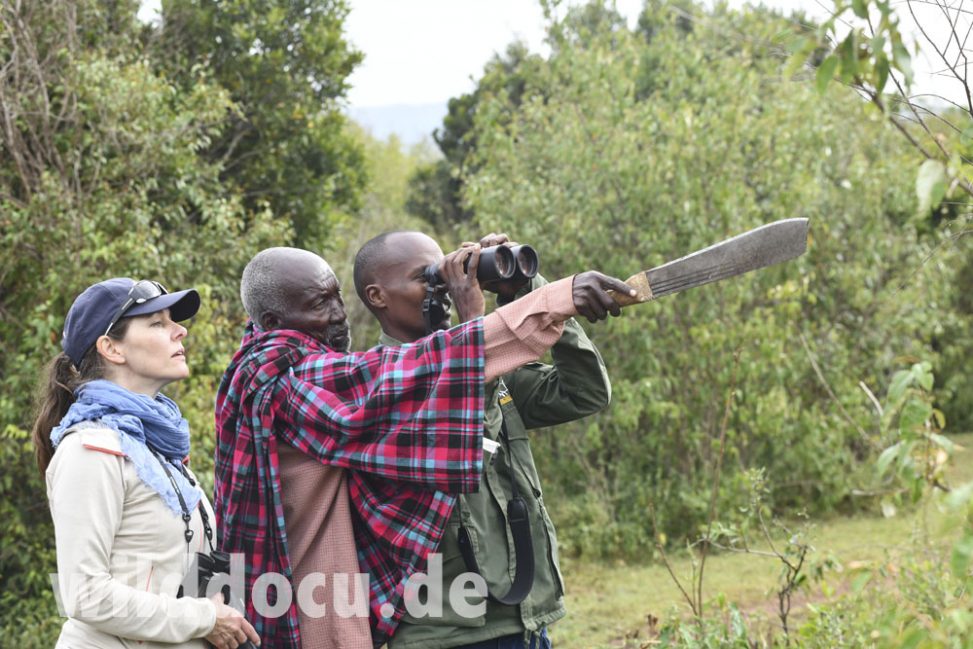
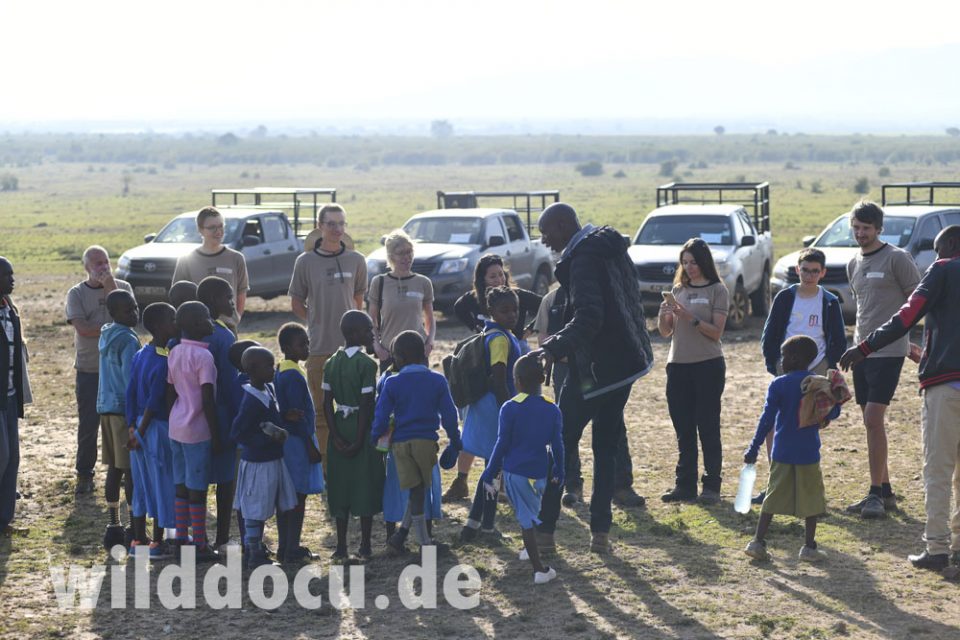


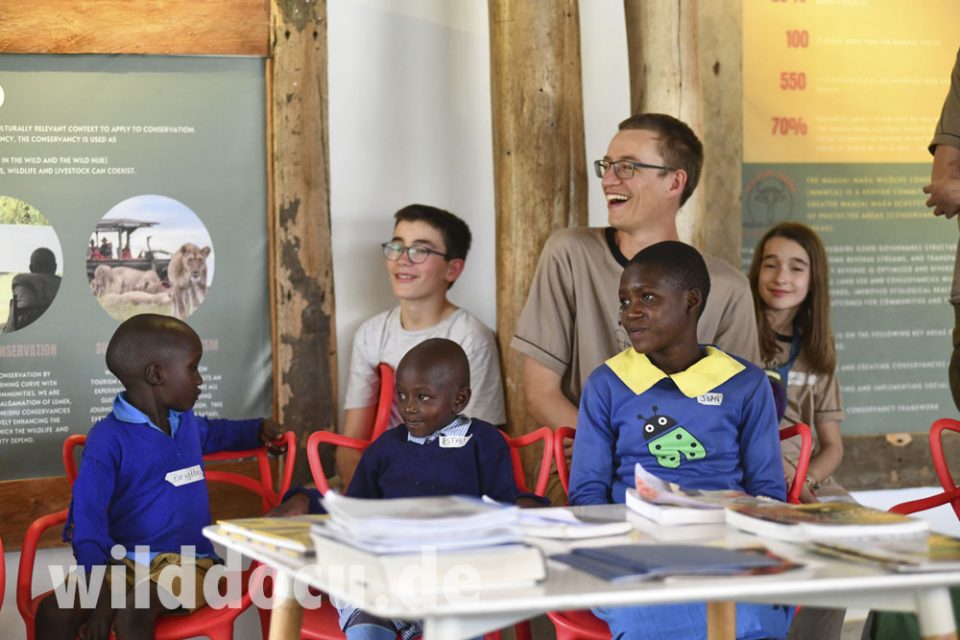
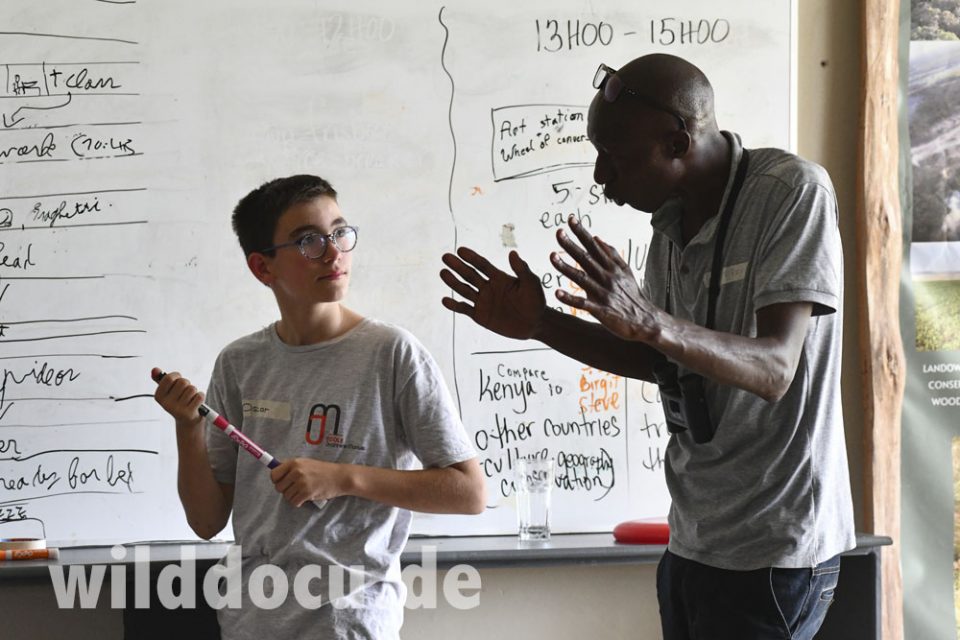
Schreibe einen Kommentar